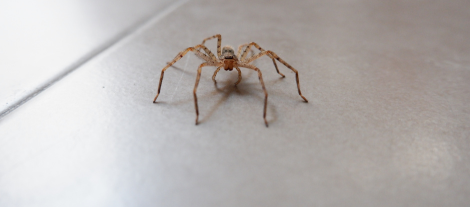Nevada’s dry climate and sprawling desert landscapes make it a prime environment for many pests, including spiders. While most spiders are harmless and even helpful for keeping insect populations in check, there are a few species that pose real risks to residents. Knowing how to recognize these spiders and where they typically hide is crucial for keeping your home safe and your peace of mind intact. This guide offers expert insight into how Nevada homeowners can spot, understand, and responsibly address spider concerns around the home.

Common Venomous Spiders Found in Nevada
While Nevada is home to a wide variety of spiders, only a few are considered medically significant. These species are capable of delivering venomous bites that may require medical attention, particularly for children, elderly individuals, or those with weakened immune systems.
The most concerning spiders in the region include:
- Black Widow: Easily recognized by its glossy black body and red hourglass marking on the underside. Typically found in undisturbed areas like garages or crawl spaces.
- Desert Recluse (or Brown Recluse): Identified by a violin-shaped mark on its back, it prefers dry, hidden locations like behind baseboards or inside storage boxes.
- Wolf Spiders: Though not aggressive, their large size and fast movement can be alarming. They may bite if handled, but are not considered dangerous unless an allergic reaction occurs.
Each of these species has distinct behavioral patterns and preferred hiding spots, which can help homeowners monitor for their presence more effectively.
Warning Signs and Indoor Hiding Places
Venomous spiders tend to favor locations where they’re unlikely to be disturbed. That means cluttered, dimly lit, or infrequently cleaned spaces are prime real estate for these arachnids. Homeowners often unknowingly invite spiders indoors through small cracks or open doors during the warmer months.
Be alert for the following indicators:
- Webs tucked into corners of closets, attics, or garages
- Frequent sightings near baseboards, furniture, or behind wall hangings
- Shed spider skins or egg sacs along baseboards and window frames
- Unexplained insect bites that worsen over time or show signs of skin necrosis
In newly built homes, this issue can be even more subtle. It’s not uncommon for pests to find easy access through gaps and settling materials, which is why new construction homes attract pests more than expected.
Preventive Steps for Homeowners
The key to controlling spiders indoors is making your home an uninviting environment for them. By managing their preferred conditions and eliminating their food sources (usually other small insects), you can reduce the likelihood of unwanted spider guests.
Here are some expert-recommended prevention tips:
- Seal Entry Points: Check for cracks around windows, doors, and baseboards. Use weatherstripping and caulk to seal these gaps.
- Declutter Storage Areas: Spiders love cardboard boxes, dusty corners, and stacks of papers. Use plastic containers and clean them regularly.
- Limit Outdoor Lighting: Bright lights attract insects, which in turn attract spiders. Use motion-activated lights or warm bulbs with lower UV emission.
- Clear Yard Debris: Firewood stacks, leaf piles, and dense vegetation near the foundation can all serve as outdoor harborage zones.
- Vacuum Regularly: High-traffic areas and seldom-used rooms should both be vacuumed often to remove webs, egg sacs, and potential food sources.
These small steps can go a long way toward deterring spiders and minimizing their activity inside your living space.
How Spiders Multiply and Why Early Control Matters
Spiders reproduce quickly when conditions are right, especially in quiet and undisturbed environments. Egg sacs can contain hundreds of spiderlings, many of which will remain nearby once they hatch. That’s why a single sighting can sometimes indicate a larger population you haven’t yet seen.
In many cases, homeowners are surprised by how fast things escalate. It helps to understand how spiders multiply fast and why early control is key to avoiding more serious infestations. Once they’ve settled into favorable conditions, they often go unnoticed until their numbers spike.
Addressing spider activity at the first signs is essential. Not only does this prevent breeding cycles from continuing, but it also ensures that you’re not dealing with multiple hiding places or eggs scattered throughout the home.
When Professional Help Becomes Essential
Although preventive measures are helpful, some spider issues require professional attention, especially when venomous species are involved. Bites from black widows or recluse spiders can lead to serious complications if not handled appropriately. Furthermore, professional technicians can inspect, identify, and treat spider-prone areas using proven, regulated methods that ensure long-term results.
Homes with frequent sightings, recurring webs, or inaccessible storage zones should be evaluated thoroughly. Professional inspection can also reveal secondary pest problems (like ants or cockroaches) that are sustaining spider populations by providing a food source.
Let the Experts Handle the Web Work
Venomous spiders aren’t something to gamble with. For peace of mind and long-term control, contact Peak Pest Control and let trained professionals create a safer, spider-free space in your Nevada home.


